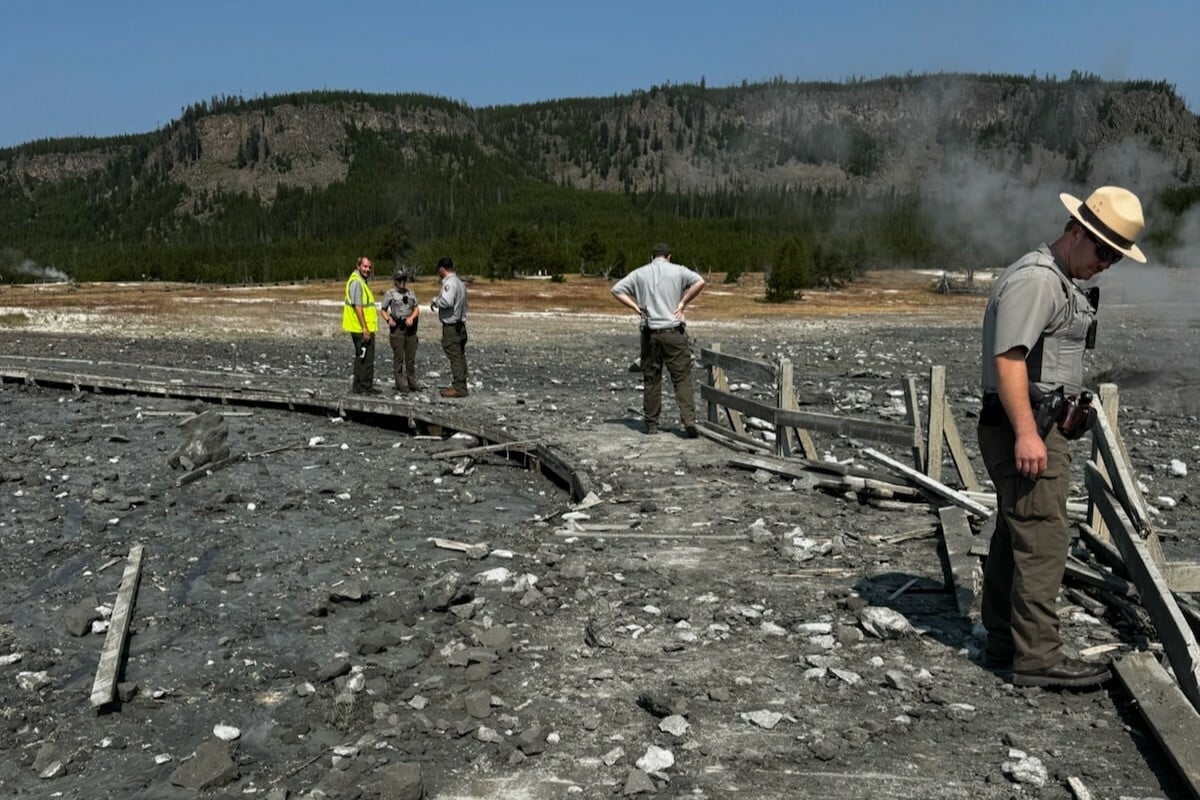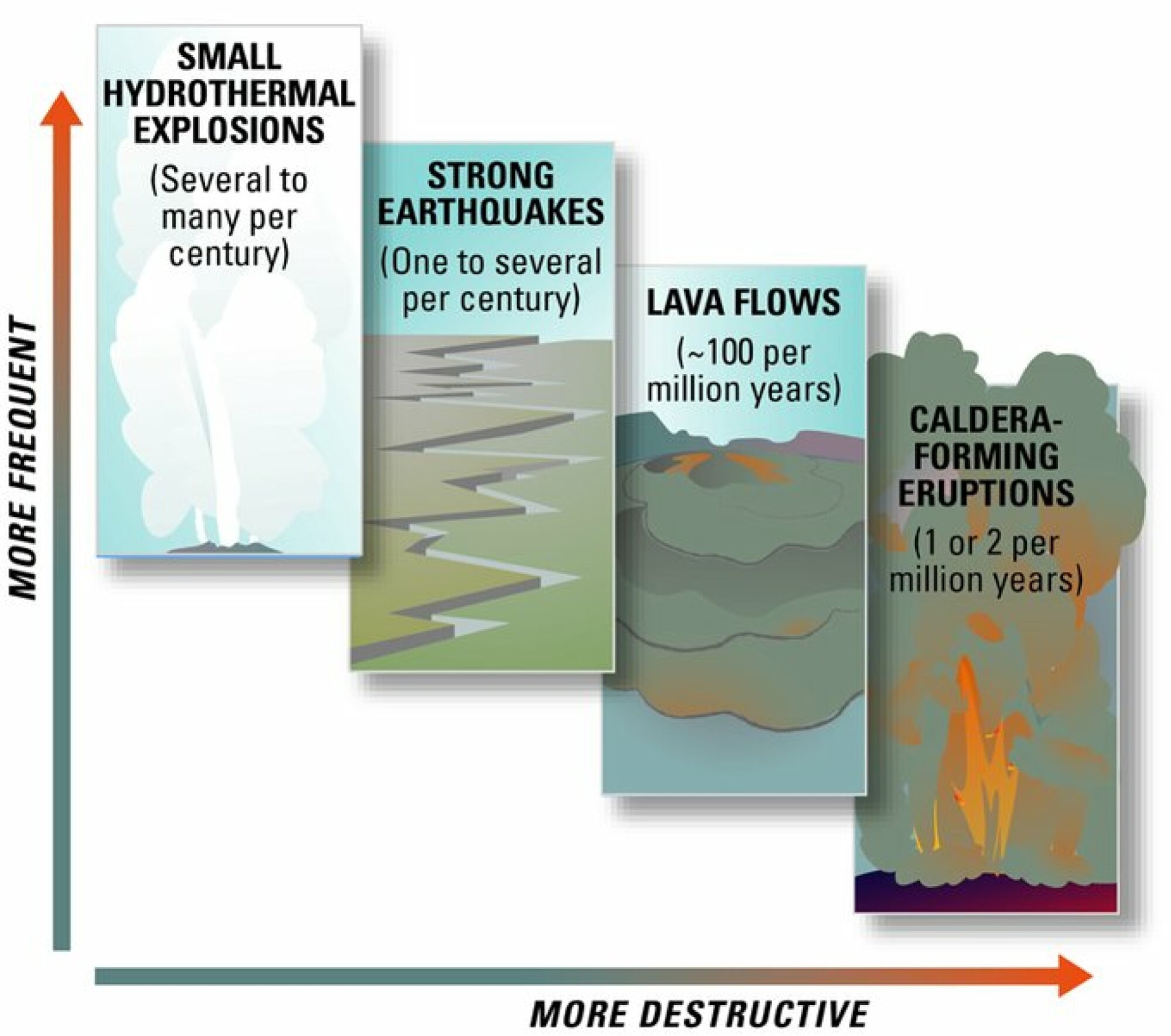
Yellowstone is an active volcano — it’s not Disneyland with bison.
It’s a park teeming with over 500 spewing geysers, in addition to many boiling hot springs. On July 23, one of Yellowstone’s thousands of thermal features, near a hot spring called Sapphire Pool, exploded. Visitors fled as a plume of mud and rock shot into the air, covering a boardwalk in debris. Understandably, the park has temporarily closed this area.
But crucially, this doesn’t mean the greater Yellowstone volcano is threatening to erupt. This was just a normal, though dramatic, event in place where molten rock (magma) brews close beneath the ground.
“The volcano remains at normal background levels of activity,” an unperturbed U.S. United States Geological Survey posted online after the event. “Monitoring data show no changes in the Yellowstone region as a result of today’s hydrothermal explosion.”
What’s a hydrothermal explosion?
This event, called a hydrothermal explosion, occurs when underground water suddenly flashes to steam. The rapid pressure increase stokes an explosion.
“They are relatively common in Yellowstone,” the USGS explained, noting these events happen every few years. “An explosion similar to that of today also occurred in Biscuit Basin on May 17, 2009.”

Credit: USGS
Does the Yellowstone explosion mean the volcano might erupt?
Thankfully, no.
“Today’s explosion does not reflect a change in the volcanic system, which remains at normal background levels of activity,” the park explained. There have been no hints of a future eruption, such an unusual earthquake activity. (The park experiences hundreds to thousands of quakes each year.)
Yellowstone’s last volcanic eruption happened some 70,000 years ago, and the events weren’t giant eruptions, on the scale that would deposit ash over a huge swath of the U.S. “Of the past 50 or so eruptions, almost all were simple lava flows,” the USGS explained. “If they occurred tomorrow or next year, they would have minimal direct effect outside Yellowstone National Park.”
Yellowstone, however, is capable of cataclysmic super-eruptions, the last of which occurred 631,000 years ago (three such events have happened over the last 2 million years). Such a “worst-case scenario” event empties the volcano of magma, causing a violent collapse of the ground and forming a huge depression. A super-eruption would be devastating locally, but wouldn’t drive global extinctions (like a colossal asteroid impact).
Fortunately, before such an extremely rare eruption, we’d have at least many decades, if not centuries, of advanced notice. It won’t be a sunny-day summer surprise.




















0 Comments